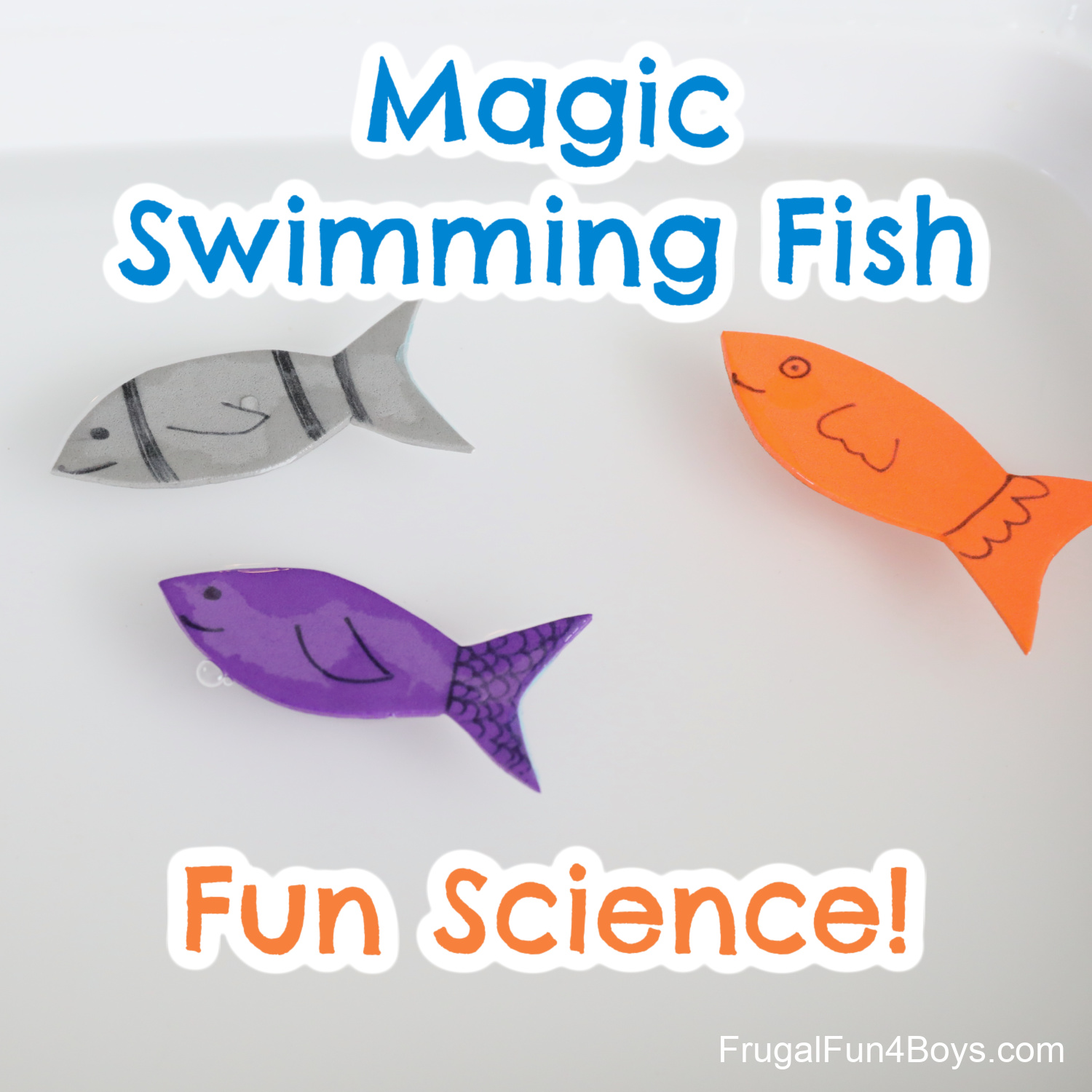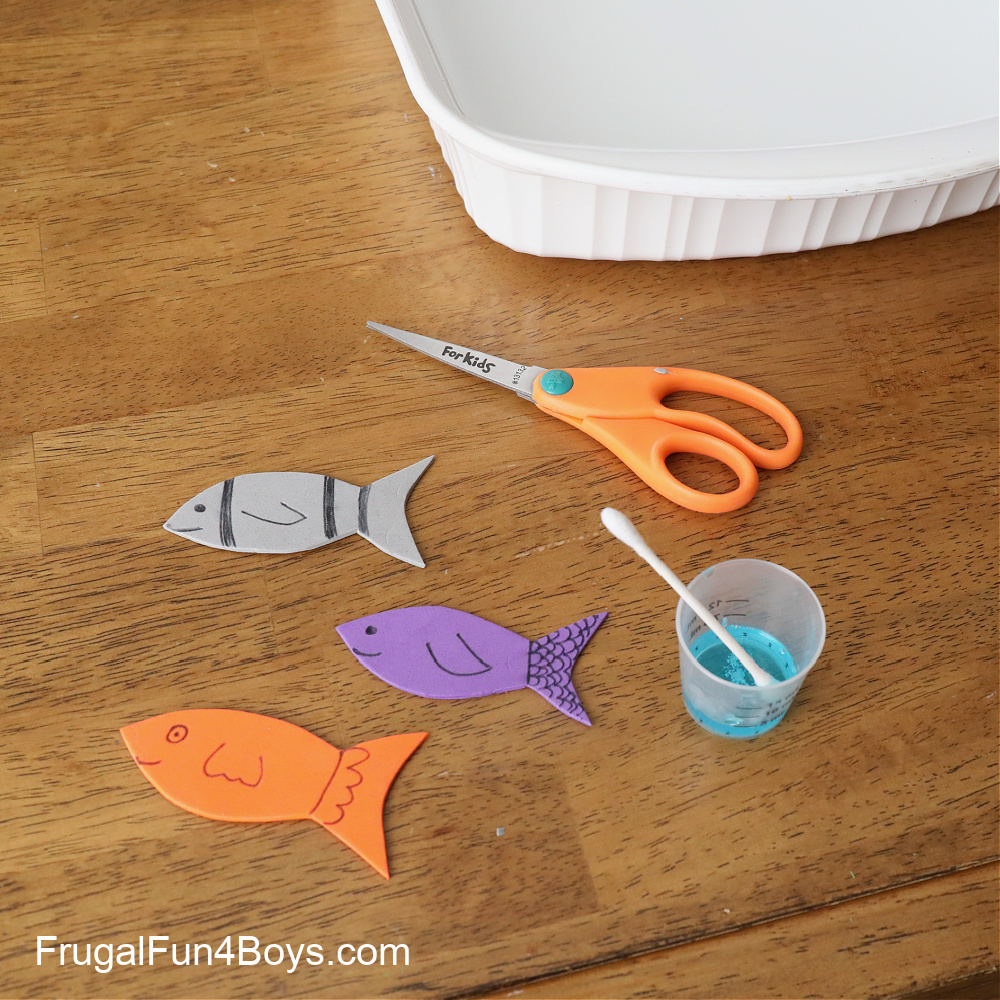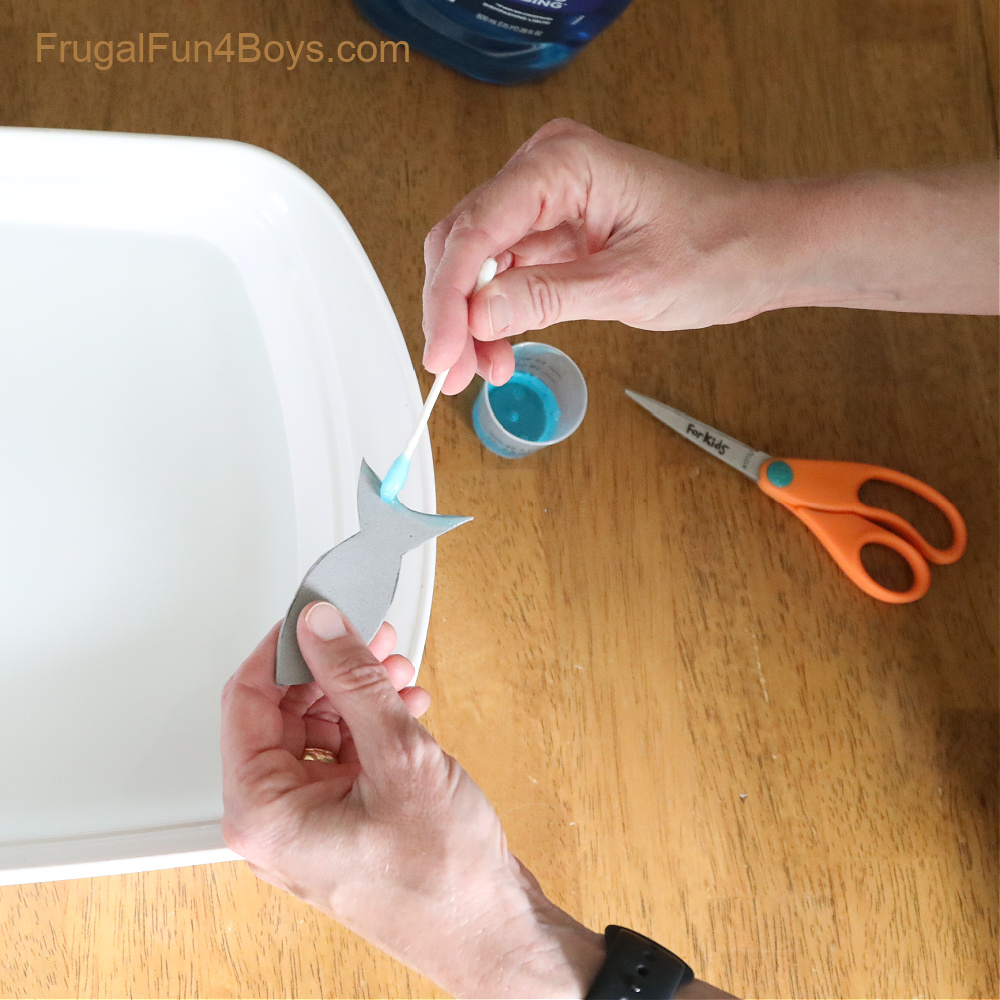This simple science experiment will make kids smile and say, “Wow!” It’s so easy and so cool! Make foam fish that “magically” swim across the water.
One of the barriers to doing science experiments with your kids can be that experiments fail or don’t turn out like the book said. I totally get that, as we’ve had plenty of fails over here! All the experiments I share on this site are tested by a real family, and I work to include the information you’ll need to make it “turn out” right.
This experiment is particularly easy to do and so fun.

First, I’ll show you how to do this cool experiment. Then there is a video demonstration at the bottom of the post. There is also a scientific explanation at the bottom of the post.
Supplies Needed:
- A baking dish or other shallow container for water. You’ll want it to be long enough for your fish to take a good swim.
- Craft foam – any colors
- Sharpie – optional, for decorating the fish
- Scissors
- Dish soap, also called washing up liquid
- A Q-tip or similar

First, cut out some fish from craft foam.
It’s important for the fish to have the V shape at its tail. Once you get this working, it would be fun for kids to test other shapes of fish and see if they swim!
I used a little medicine cup to hold the dish soap. You won’t need much! And please tell me that someone else has a huge stack of these little medicine cups sitting around, haha. I don’t ever want to throw them away because they could be useful! But we have so many!

Then make a fish swim with soap!
Fill your baking pan with a couple inches of water. Then spread a little bit of soap right along the edge of the fish’s tail. I put the soap on the end and the underside of the tail.

Set your fish in the water, and watch it swim away! Wow!

NOTE: You can repeat this experiment as many times as you want! You can even have two fish swim at once. BUT, you will need to use fresh water for each swim. You can’t reuse the water, as it already has soap in it at that point.
Ready to see the fish swim? Click the play button to watch the video.
The Science Behind the Swimming Fish
This fish swims because of surface tension. Water has surface tension because its molecules have polarity. Water molecules (made of two hydrogen atoms and one oxygen atom) have a positively charged end and a negatively charged end, and because of these charges they attract each other, and they are attracted to other substances. This is why you can fill a glass until the water has piled up in a rounded dome. You can add an incredible amount before it finally spills over the side. It might help young kids to picture all the water molecules holding hands. They don’t want to let go of each other!
When you put some soap on one end of the fish but not the other, you reduce the surface tension. The water molecules are no longer pulling on that side of the fish, and the fish swims the other direction!
The reason you can’t repeat this experiment is that the soap spreads throughout the water, lowering the surface tension everywhere. You are no longer able to create a difference in surface tension that propels the fish to move.
Here’s a more detailed explanation from Scientific American, if you’re interested! Good for older kids.
Want more simple science experiments for kids?
Here are more than 25 Science Experiments for Kids – all use simple materials from the kitchen and around the house!


3 Comments
Kelley Hudson Aug 4, 2021
Love this experiment but would have liked to see your fish swim. I did not see the play button! Thanks for another great science experience!
Sarah Aug 7, 2021
If you're not seeing the play button, it's probably because of an ad blocker. Running ads on this site is how I am able to make this site my job without charging readers for the content. Ad blockers won't allow the video to play because of the ad at the beginning of the video.
Dorothy Aug 4, 2021
Thanks Sarah! My little grandkids will love the swimming fish! Will try the penny one too if I can find some--I"m in Canada and we did away with pennies in 2012!
Sarah Aug 7, 2021
You can do the penny experiment with any coin! Doesn't have to be a penny!
Lane Aug 16, 2021
Love this science idea! I think my combined Girl Scout troop might enjoy it at our first meeting…so cool!
Thanks for sharing your cool ideas!
Post a Comment